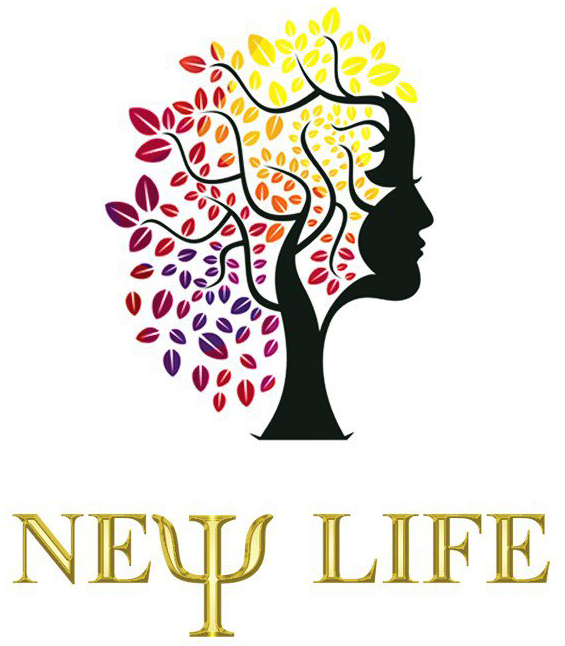1. Introduction: The Significance of Symbols in Cultural Evolution
Symbols of luck and power are ingrained in the fabric of societies worldwide, serving as visual representations that embody collective beliefs, hopes, and authority. These symbols often transcend language barriers, acting as universal cues that influence individual and societal behaviors.
Throughout history, cultures have utilized symbols—such as amulets, animals, or mythological figures—to conjure good fortune or assert dominance. As societies evolve, so do their symbols, adapting to new contexts and technologies, yet retaining their core meanings rooted in ancient traditions.
Table of Contents
- The Historical Roots of Symbols of Luck and Power
- Cultural Variations and Interpretations of Luck and Power Symbols
- The Role of Symbols in Modern Media and Entertainment
- Educational Perspectives: Symbols as Tools for Teaching and Cultural Transmission
- The Psychological Impact of Symbols of Luck and Power
- The Evolution of Symbols in the Digital Age
- Case Study: Le Zeus as a Modern Symbol of Power and Luck
- Non-Obvious Aspects of Symbolic Evolution
- Conclusion: The Continual Transformation of Symbols and Their Cultural Significance
2. The Historical Roots of Symbols of Luck and Power
a. Ancient Civilizations and Their Emblematic Representations
Ancient societies, from Egypt to Mesopotamia, crafted symbols to invoke divine favor or signify authority. Pharaohs wielded insignias like the crook and flail, representing kingship and protection, while Egyptian hieroglyphs often depicted symbols of fertility and luck, such as the scarab beetle. These emblems served not only as identifiers of power but also as spiritual tools believed to influence the natural and supernatural worlds.
b. Examples of Early Symbols: Masks, Talismans, and Mythological Figures
Early cultures used masks in rituals to embody gods or spirits, such as the Greek theatrical masks representing divine qualities or mythological figures like Zeus and Athena symbolizing authority and wisdom. Talismans—objects believed to bring luck—were crafted from materials like jade or amulets inscribed with protective symbols, exemplified by the ancient Chinese “fu” charms or Roman luck talismans. Mythological figures often personified abstract concepts, reinforcing societal values and fears.
c. The Influence of Religion and Mythology on Symbol Development
Religious narratives profoundly shaped symbols, embedding them with layered meanings. For example, the Christian cross signifies divine authority and salvation, while Hindu deities like Ganesha embody luck and obstacle removal. Mythology provided archetypes—such as Athena’s owl representing wisdom—that persisted through centuries, influencing art, ritual, and societal hierarchy.
3. Cultural Variations and Interpretations of Luck and Power Symbols
a. Cross-Cultural Differences in Symbols
Different cultures associate specific symbols with luck and power, often with unique origins. The four-leaf clover, prevalent in Irish tradition, is considered a symbol of luck due to its rarity and association with St. Patrick’s Day. Similarly, the horseshoe, used in Western cultures, is believed to ward off evil, especially when hung above doorways. In contrast, elephants in Asian cultures symbolize wisdom and strength, with their trunks considered auspicious when facing upwards.
b. Similar Symbols, Different Meanings, and Their Origins
Interestingly, some symbols carry different meanings across cultures. The swastika, for example, was an ancient symbol of good luck in Hinduism and Buddhism but became associated with negative connotations due to 20th-century history. Such variations illustrate how historical context influences the interpretation of symbols, emphasizing the importance of cultural sensitivity.
c. The Adaptation of Symbols in Modern Contexts
Today, traditional symbols are frequently integrated into branding and entertainment. For instance, companies use lions or eagles in logos to evoke strength and authority. In entertainment, symbols of luck and power are stylized—like the lightning bolt associated with Zeus—showcasing how ancient motifs adapt to contemporary narratives. Modern digital platforms also repurpose symbols, such as emojis, to convey complex emotions succinctly.
4. The Role of Symbols in Modern Media and Entertainment
a. How Symbols Are Used to Evoke Feelings of Luck and Power in Popular Culture
In movies, video games, and branding, symbols serve as powerful tools to evoke specific emotions. A crown signifies authority; a four-leaf clover suggests luck. These visual cues tap into subconscious associations, enhancing storytelling and engagement. For example, in slot games, symbols like the horseshoe or lucky number sevens are deliberately used to reinforce themes of fortune.
b. Case Study: Le Zeus and Mythological Symbolism in Contemporary Gaming
Modern gaming platforms often incorporate mythological themes to deepen user immersion. A guide to Le Zeus bonuses exemplifies how symbols like lightning bolts, gods, and ancient artifacts are used to create an aura of power and luck. Such symbols not only attract players through visual appeal but also connect gameplay with timeless stories of divine influence, illustrating how ancient symbols are reinterpreted in modern entertainment.
c. The Transformation of Traditional Symbols into Modern Icons and Motifs
Traditional symbols have been stylized into sleek icons, logos, and motifs that resonate globally. The eagle, once a symbol of imperial power, now appears in various branding contexts to evoke leadership. Similarly, the use of mythological motifs in fashion or digital art demonstrates how ancient symbols continue to influence contemporary aesthetics, blending history with modern design.
5. Educational Perspectives: Symbols as Tools for Teaching and Cultural Transmission
a. Using Symbols to Teach History, Values, and Cultural Identity
Symbols serve as visual anchors in education, helping learners connect abstract concepts with tangible representations. For example, the Greek theater masks symbolize the duality of tragedy and comedy, teaching students about ancient Greek culture. Similarly, national flags and emblems transmit shared values and identity across generations.
b. Examples of Symbols in Educational Settings
Theater masks from Ancient Greece are among the earliest educational symbols, illustrating the origins of Western drama and societal values. Symbols like the dove for peace or the olive branch for victory are used in classrooms to foster understanding of complex ideas through simple imagery. Visual symbols enhance memory retention by creating associations that stick with learners.
c. The Impact of Visual Symbols on Learning and Memory Retention
Research indicates that visual aids significantly improve retention and comprehension. Symbols activate the brain’s associative networks, allowing learners to recall information more effectively. Integrating culturally relevant symbols into educational content can also foster a deeper appreciation of diverse traditions and histories.
6. The Psychological Impact of Symbols of Luck and Power
a. How Symbols Influence Individual Mindset and Behavior
Symbols shape perceptions and can influence decision-making. For example, a person wearing a lucky charm might experience increased confidence, a phenomenon supported by psychological studies on placebo effects. Such symbols act as subconscious cues, reinforcing beliefs and encouraging proactive behavior.
b. The Placebo Effect and the Power of Belief in Symbols
The efficacy of lucky charms or rituals demonstrates how belief in symbols can produce tangible outcomes. A famous example is the “power of the placebo,” where individuals’ expectations influence their experiences, illustrating that symbols can have real psychological and emotional effects.
c. Non-Obvious Insights: Symbols as Subconscious Cues Shaping Societal Norms
Beyond individual impact, symbols help establish societal norms. National flags or religious icons serve as collective cues that reinforce shared identities and values, often operating below conscious awareness, yet profoundly shaping societal behaviors and attitudes.
7. The Evolution of Symbols in the Digital Age
a. The Proliferation of Symbols Through Social Media and Digital Platforms
Digital platforms have transformed symbols into rapid, widespread communicative tools. Emojis, memes, and digital logos propagate cultural meanings instantly across borders, allowing symbols of luck and power to adapt dynamically to contemporary contexts.
b. Memes, Emojis, and Their Role in Modern Symbolic Communication
Memes often incorporate symbols—such as the peace sign or the clenched fist—to convey complex social messages. Emojis, like the four-leaf clover 🍀 or thumbs-up 👍, serve as shorthand for luck and approval, demonstrating how digital symbols continue to shape societal norms in real-time.
c. The Persistent Relevance of Traditional Symbols Amid Technological Change
Despite the rapid growth of digital symbols, traditional motifs retain their significance. The lightning bolt, for instance, remains a powerful emblem of divine power, as seen in branding and entertainment, exemplifying the enduring relevance of ancient symbols in modern digital culture.
8. Case Study: Le Zeus as a Modern Symbol of Power and Luck
a. The Design and Branding Elements That Tie Le Zeus to Mythological Themes
Le Zeus leverages mythological imagery—lightning bolts, divine figures, and ancient motifs—to evoke notions of supreme power and fortune. These visual elements connect players to stories of gods and legends, creating an immersive experience rooted in cultural symbolism.
b. How Le Zeus Incorporates Symbols of Luck and Power to Attract Users
By integrating symbols like the lightning bolt, laurel wreaths, and divine statues, Le Zeus taps into deep-seated cultural associations with strength and luck. These symbols serve as subconscious cues that enhance user engagement and perceptions of winning potential. For more insights into how such symbols are effectively used, a guide to Le Zeus bonuses offers detailed explanations.
c. The Broader Implications of Such Symbols in the Gaming Industry
The strategic use of mythological and symbolic imagery in gaming demonstrates how ancient motifs continue to influence modern entertainment. They foster emotional connections, enhance storytelling, and reinforce brand identities, illustrating the timeless power of symbols of luck and authority.
9. Non-Obvious Aspects of Symbolic Evolution
a. The Intersection of Cultural Appropriation and Symbolism
Cultural appropriation raises questions about the respectful use of symbols. When symbols like the Native American headdress or Asian motifs are adopted without context, they risk distorting or commodifying cultures. Recognizing the origins and meanings of symbols is crucial for respectful cultural exchange.
b. Symbols as Tools for Political Influence and Social Change
Symbols often become rallying points in political movements—think of the raised fist during protests or flags representing national sovereignty. They can galvanize support, shape public opinion, and drive social change, demonstrating their strategic importance beyond individual beliefs.
<h3 style=”font-size: 1.8em; margin-top: 25px; color: #2c



